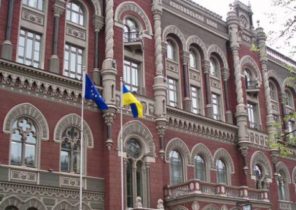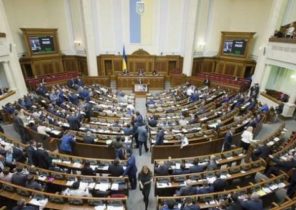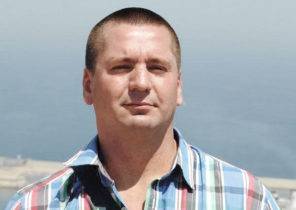The village doctors from the French Drome and Brittany say that they play online games to pass the time in their hastily refitted hospitals, in vain expecting an influx of patients with coronavirus. “We didn’t have to fight,” says Celine of Gondoin (Céline Gondoin), doctor of Drôme. Dr. Celine Berthier (Céline Berthié), from the commune of Cussac, Cantal-Fort-médoc, North of Bordeaux, said that she accepts in week 4 or 5 patients with suspected covid-19, although was expecting a “tsunami infected”. In this commune, as in many other places, quickly established outpatient counselling centres deserted. Some have already closed, as in Grenoble. Some have never had one patient.
“The Maginot line” between regions with alarming statistics and tranquil areas divides France into North-East and South-West, forming a “frontline” zone in the Metropolitan area.
Coronavirus as if settled on a few areas and is not going to leave them. The share of the ten departments account for half of the deaths. Conversely, in the sixteen departments since the beginning of the epidemic had been registered at least ten deaths in total.
It would be tempting to see in all this the positive effect of quarantine measures. But this is a strange uneven distribution of the coronavirus seems to be constant regardless of the measures taken. Such a pattern is found in Spain, where Madrid and Catalonia give 60% of deaths in Italy — 70% of deaths are registered in Lombardia and in Emilia-Romagna. A mixed picture occurs in Sweden and the Netherlands, which, however, did not take quarantine measures. In the southern region of the Netherlands, for example, recorded 530 deaths per million inhabitants, while in the West, where the Amsterdam — 220.
“What is surprising is not only the concentration of the epidemic, but also the fact that this concentration does not change with time,” notes Olivier Bouba-Olga (Olivier Bouba-Olga), University of Poitiers, which tracks the evolution of the epidemic since its emergence.
This specific method of spreading the virus has already been seen in 2002-2003, during the previous epidemic — SARS-Cov-1. This virus, similar to the current (named SARS-Cov-2), also extended to “oil spots”, focusing on some cities of China, Singapore, Taiwan, Hong Kong and even Toronto.
In retrospective studies there are two main factors: the fundamental role supercontinuum events (fungal infection) and nosocomial transmission to health staff. They play a key role in the current epidemic. Remember the Evangelical meeting in Mulhouse, where it has infected more than thousands of believers, including the nurse who allegedly infected 250 nursing colleagues in the University hospitals in Strasbourg. Italy soccer Champions League match Atalanta against Valencia considered the trigger mechanism of the national epidemic: there were about 40 thousand fans. “German Wuhan” was the carnival in Gangelt, near the Dutch border. In these meetings, where people stand close to each other, contamination through the respiratory tract as possible.
It is important that most of the contamination occurs during prolonged social interaction in a closed environment. After analyzing more than 7 thousand 300 cases of the disease beyond the initial focus (Hubei province), Chinese researchers found that contamination occurred in the confined areas, mostly in apartments. Another study conducted in new York, points to the role of the underground, you have limited space, as a contributing factor in the spread of the epidemic throughout the city.
In closed areas the process is the same: a drop left by the carriers of the virus, will focus on surfaces (clothing, walls, pens, smartphones), and then, through the mouth, nose and eyes (they are the “gateway” to the virus) into the body of another person.
Microdroplets can stay “suspended” in the air, causing human infection in this air for several hours. These suspended solids can accumulate in confined spaces, for example in hospital toilets, and even penetrate into the ventilation system. As soon as the spark occurs, the epidemic moves from one closed place to another: apartment, subway, prison, nursing homes or even hospitals. They are the second “engine” of the current epidemic.
Only in the Paris hospitals in mid-April at covid-19 was positively tested 4 thousand 275 medical professionals. And among staff of other health and social agencies as of April 20, there were 31 thousand 900 possible or confirmed cases.
Another factor noted by some researches: air pollution or, more precisely, the speed of suspended particles. In France, Italy and Spain hardest hit areas with higher content of fine particles in the air. It is a simple consequence urbanized areas or real causality? Several studies indicate the ability of viruses “cling” to the pollutant particles and, thus, survive in the air and to circulate together with the wind. Hypothesis: the air pollution aggravates the symptoms covid-19, making it more vulnerable mucous membranes of the nose, throat and respiratory tract. However, this version is also not confirmed.
Finally, climate may also play a role: high temperature and ultraviolet radiation, in theory, weaken the virus, so all hope that summer will slow the spread of the pandemic.
Limited space, population density, hospital, metro… Now we better understand why the fashion industry prefers city to rural areas.







